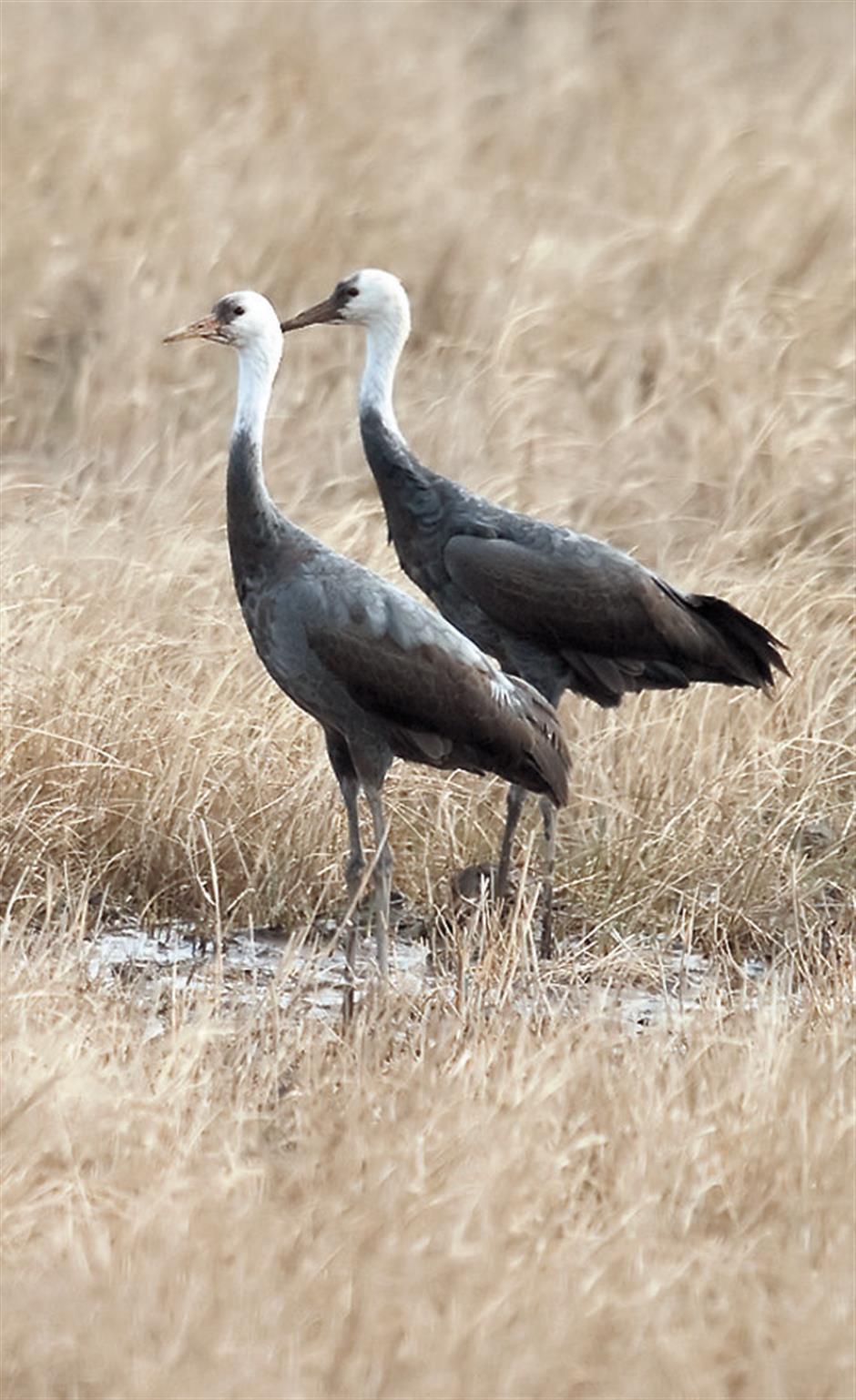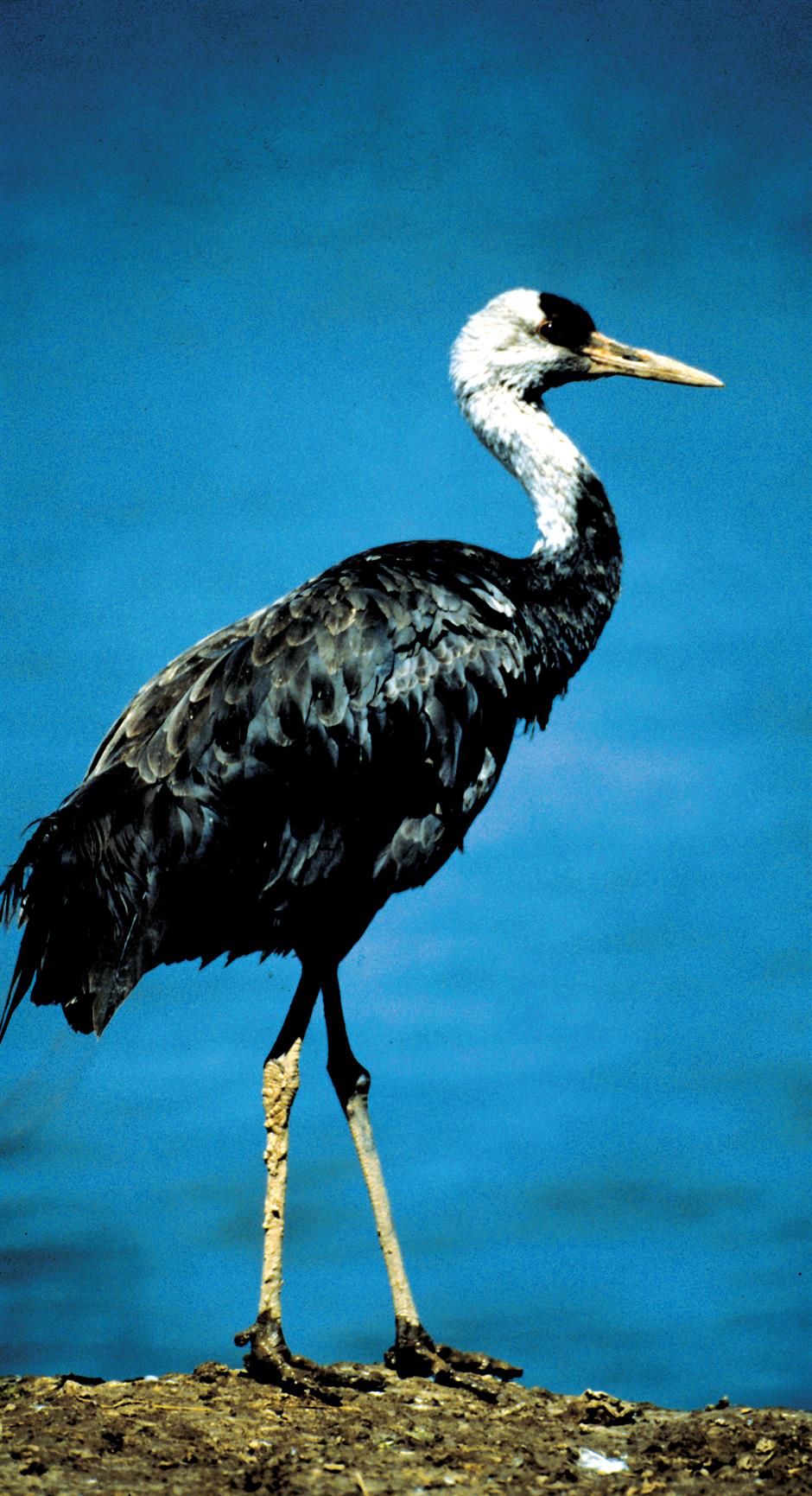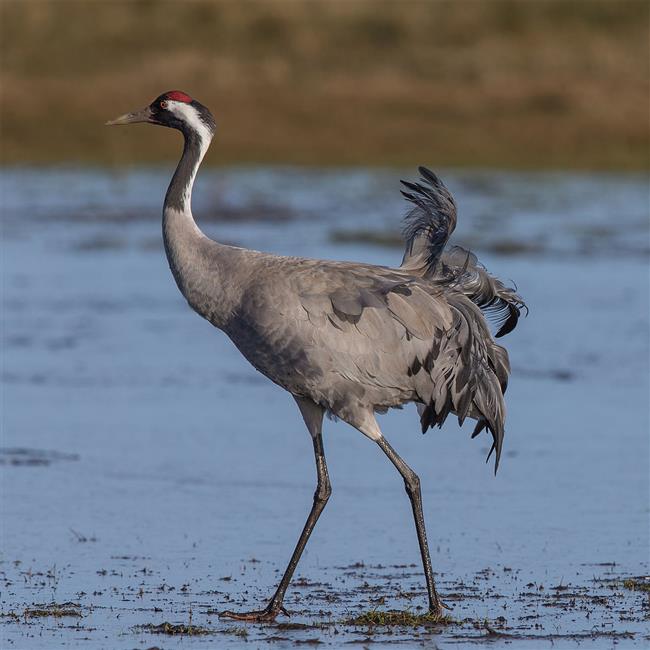Dancing with the cranes
Crane dances are just one of many striking spectacles to be found in nature. Italian composer Ludovico Einaudi wrote a piece titled “The Crane Dance” that reflects the intricate courtship dances of cranes. And with a bit of luck it’s possible to see cranes in Shanghai.
A flock of less than 100 hooded cranes arrive in Chongming Dongtan National Nature Reserve every October. They stay for the winter and leave in March.
The hooded cranes, a species designated as vulnerable by International Union for Conservation of Nature, are safe within the nature reserve, which was established in 1998. The reserve joined the East Asian-Australasian Migratory Shorebird Nature Reserve Network the following year.
On the eastern end of Chongming Island in the Yangtze River estuary, the nature reserve has four parts forming a semicircle outside the seawall. It covers an area of 241.55 square kilometers and accounts for 7.8 percent of Shanghai’s total wetlands.
The nature reserve is an integral part of the migration routes of the cranes, water fowls and shorebirds in east Asia. Approximately 1 million migratory birds stop annually at Chongming Dongtan.

A flock of hooded cranes spotted at Chongming Dongtan on January 19, 2015.
Ma Qiang, who heads the reserve’s science and technology information department, has been at the forefront of observing and protecting the birds in the wetlands. He complies various research projects and surveys on birds and plants in the reserve.
“The data for just one year may not seem so important, but after five years, 10 years, they reflect the existing problems,” said the East China Normal University graduate who majored in ecology.
Ma is busiest in the spring, when he and his colleagues are in the field most days. In the summer the researchers sort through the data. They conduct surveys on migratory birds in the winter. This entails tracking the birds in the reserve at least twice a week.
“Monitoring the cranes includes observing changes in their behavior,” said Ma, who has worked at the reserve since 2005. “They used to stay in a mudflat area but now they are more commonly found on farmland.”
While the researchers are unsure of why the cranes made the switch they believe the birds can find food easier on the farmland.
They have also noticed that if the farms change their crop planting patterns then the cranes don’t come.
“Chongming is one of the homes of hooded cranes. Many people don’t know you can see wild cranes in Shanghai. It’s the only place to spot them along the coast,” he said, adding that somewhere between 400 and 600 hooded cranes winter at Shengjin Lake in Anhui Province.
An unsolved mystery among the researchers is where the hooded cranes in Chongming come from and where they breed.
“We would very much like to know where they come from,” Ma said. “We can only guarantee their safety here, we don’t know where they live in the summer. And if something happens during their migration, we wouldn’t know either.”

Hooded crane is one of the two species winter in Shanghai from October to March. — Chongming Dongtan National Nature Reserve
Ma Qiang, who heads the reserve’s science and technology information department, has been at the forefront of observing and protecting the birds in the wetlands. He complies various research projects and surveys on birds and plants in the reserve.
“The data for just one year may not seem so important, but after five years, 10 years, they reflect the existing problems,” said the East China Normal University graduate who majored in ecology.
Ma is busiest in the spring, when he and his colleagues are in the field most days. In the summer the researchers sort through the data. They conduct surveys on migratory birds in the winter. This entails tracking the birds in the reserve at least twice a week.
“Monitoring the cranes includes observing changes in their behavior,” said Ma, who has worked at the reserve since 2005. “They used to stay in a mudflat area but now they are more commonly found on farmland.”
While the researchers are unsure of why the cranes made the switch they believe the birds can find food easier on the farmland.
They have also noticed that if the farms change their crop planting patterns then the cranes don’t come.
“Chongming is one of the homes of hooded cranes. Many people don’t know you can see wild cranes in Shanghai. It’s the only place to spot them along the coast,” he said, adding that somewhere between 400 and 600 hooded cranes winter at Shengjin Lake in Anhui Province.
An unsolved mystery among the researchers is where the hooded cranes in Chongming come from and where they breed.
“We would very much like to know where they come from,” Ma said. “We can only guarantee their safety here, we don’t know where they live in the summer. And if something happens during their migration, we wouldn’t know either.”

Chongming is one of the homes of hooded cranes. Many people don't know you can see wild cranes in Shanghai.
Cranes are known for their fluid movements, which have inspired several styles of kung fu including being the fifth of the “Five Animals” martial art that originated in Shaolin Temple.
They also tend to be very vigilant and thus tagging some for tracking is hard. Ma says getting within 100 meters of a crane is extremely difficult. Wu Wei, a researcher at the reserve since 2008 with a PhD in animal ecology, says the main threat to the hooded crane population is loss of habitat.
“For migratory birds, their summer and winter habitats are relatively safe but the greatest threat is the stops along the route,” Wu said.
The population of hooded cranes in Chongming has remained stable over the years. Every year the flock wintering at the reserve is around 100.
While this seems like good news, it raises concern among researchers, Ma said. Cranes live an average of 60 years and there are both adult and young birds in the flock.
“Having nearly an identical number every year is not very optimistic,” he says. “On one hand it means they are not disappearing, but on the other hand with newborns every year, the number isn’t increasing.”
Ma and his colleagues also work closely with organizations from other countries like the Australasian Wader Studies Group.
“The efforts of one single country isn’t enough to protect migratory birds since,” he says. “We all need to communicate and work together.”
The nature reserve has built an education center that organizes activities to teach the importance of nature reserves, migratory birds and habitat protection.
Known for their beauty and gracefulness, cranes have long inspired artists around the world. Painter Shen Quan (1682-1760) is known for his “Pine, Plum and Cranes” painting that featured two red-crowned cranes.
Giuseppe Castiglione (1688-1766), an Italian Jesuit who became a painter, is perhaps best known for his work “Cranes Among Flowers.”
As for the crane dance, males are known to lift their wings up high over their back. They then step, leap, run and flap their wings elegantly in order to impress females. Somehow everything always seems to be about sex.
The colorful facts about these majestic birds
Cranes are large birds with a length ranging from 90 centimeters (demoiselle crane) to 176 centimeters (sarus crane).
These long-legged and streamlined birds fly with their necks outstretched and legs extended beyond the tail.
Most species have some bare skin on the face and this is used to communicate with other cranes. The only two exceptions are blue cranes and demoiselle cranes.
Males and females do not have obvious differences in appearance, but males tend to be larger than females.
They are omnivores. Their main diet consists of roots, seeds, grains, grass, berries, leaves and nuts but they also eat insects, snails and small animals.
Cranes are very vocal birds and have specialized calls.
During breeding season, cranes are territorial and in the non-breeding season they tend to form large flocks and feed together as it’s crucial for safety and nurturing the young.
Cranes are monogamous and establish long-term pair bonds.
There are 15 species of cranes worldwide including nine found in China. Of the nine, the common crane, black-necked crane, red-crowned crane, white-napped crane, sarus crane and demoiselle crane breed in China.
The demoiselle crane is the smallest crane species and has one of the toughest migration routes. They fly across the Himalayan Mountains from late August through September to arrive in India for the winter.
Hooded crane (Grus monacha)

One of the smallest cranes.
Has a long, straight yellow-green beak.
Has grey legs and feet, the top of the neck and head is white except for a patch of bare red skin above the eyes.
They have hazel yellow to orange brown eyes.
The body is dark grey with some black feathers around the lower part of the neck.
The juvenile hooded crane’s crown is covered with black and white feathers in the first year, and has some brownish wash on their body.
There are approximately 10,000 wild hooded cranes around the world, and about one tenth winter in China.
They breed in Siberia, Russia and Mongolia. Two breeding sites have been found in Heilongjiang Province, China.
The hooded cranes travel in families or large groups.
At Chongming Dongtan, the sedge marsh and the edges of the tidal channels are their favorite places as they can easily feed on the sedge corms floating on the water. They move to the inner side of the sedge marsh or other shallow areas to roost during the high tide period.
The hooded crane is on the IUCN’s Red List of Threatened Species and is a class I national protected species in China.
Over 80 percent of the population winters in Izumi, Japan, as the result of artificial supplementary feeding. This also poses a potential risk to the species in case of catastrophes or disease outbreak, according to IUCN and the International Crane Foundation.
A small number also winter in South Korea.
Common crane or Eurasian crane (Grus grus)

The body is slate gray with the rump darker than the breast and wings.
The forehead and lores are black with a red crown. The chin, throat and anterior part of the neck are black to dark gray. A white streak stretches from behind the eyes to the upper back. The legs and toes are black, the bill is light colored.
The head and neck feathers of juveniles are gray tipped with cinnamon and the crown is fully covered by feathers.
Every two years the adult common crane sheds its feathers after breeding and before migration. They remain flightless for six weeks until new feathers grow.
Common cranes breed in Europe, Mongolia, northern China and eastern Siberia.
They winter in swampy meadows, shallow bays, rice paddies and pastures, according to IUCN.
It is one of only four crane species not classified as threatened with extinction on the IUCN Red List. Sandhill, demoiselle cranes and brolga are the others.
It is a class II national protected species in China.
















